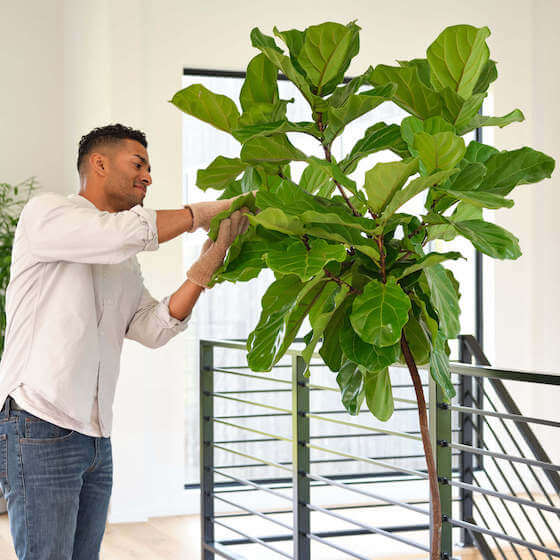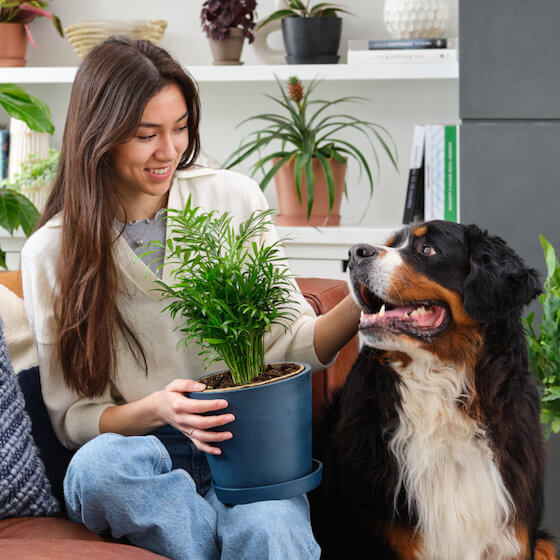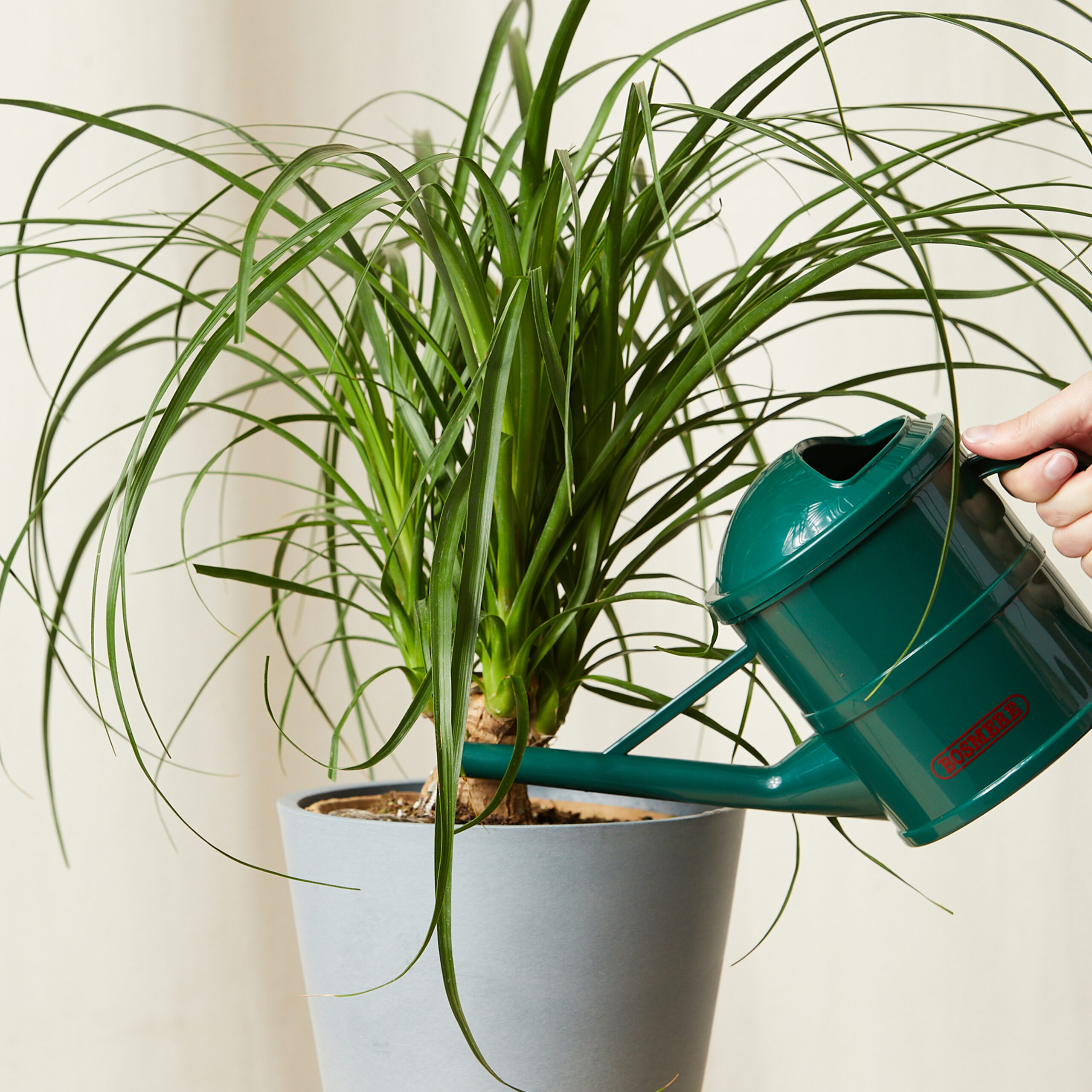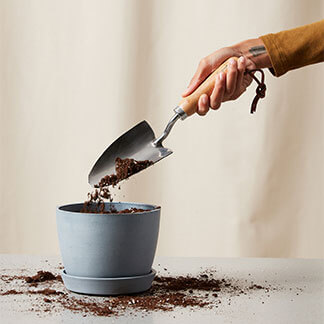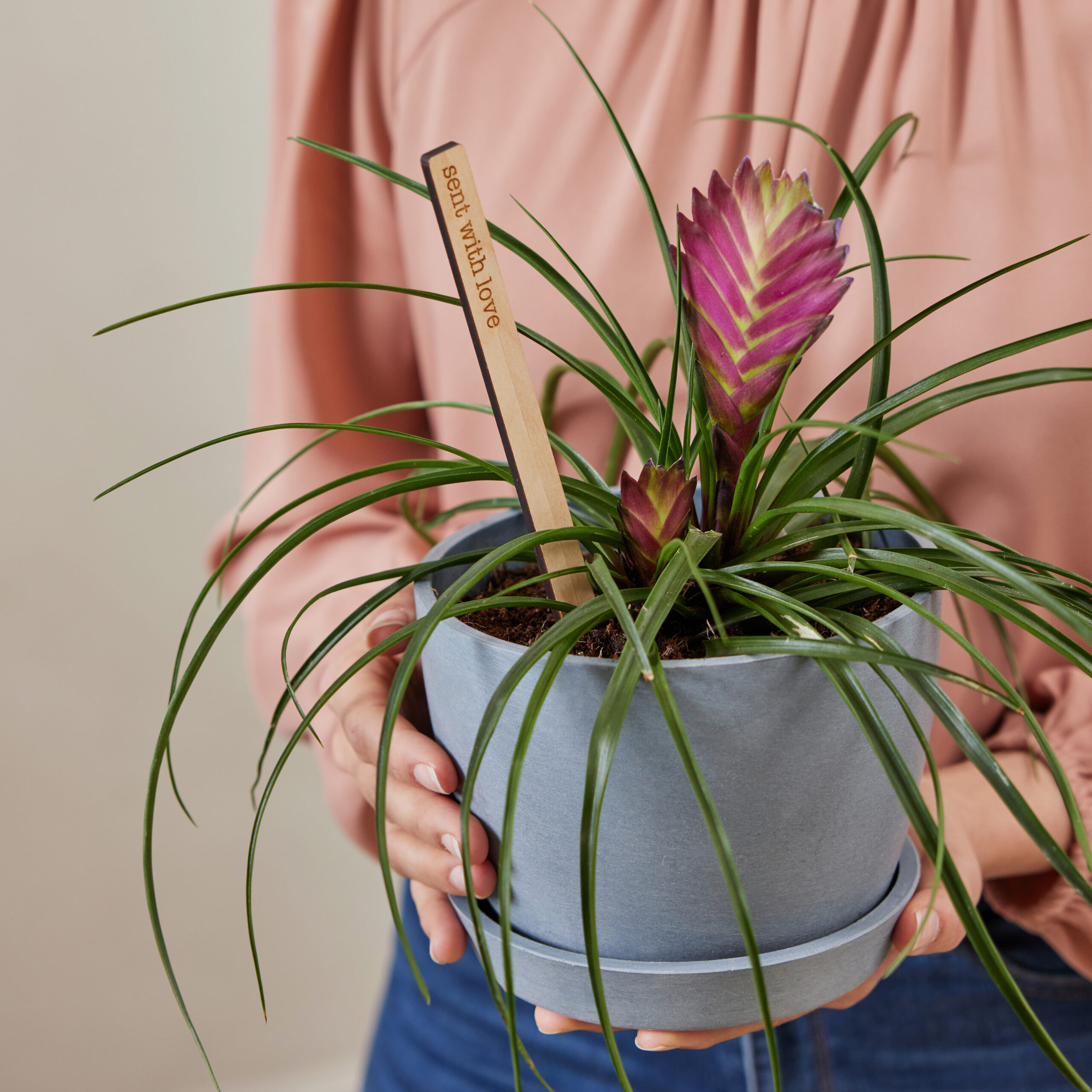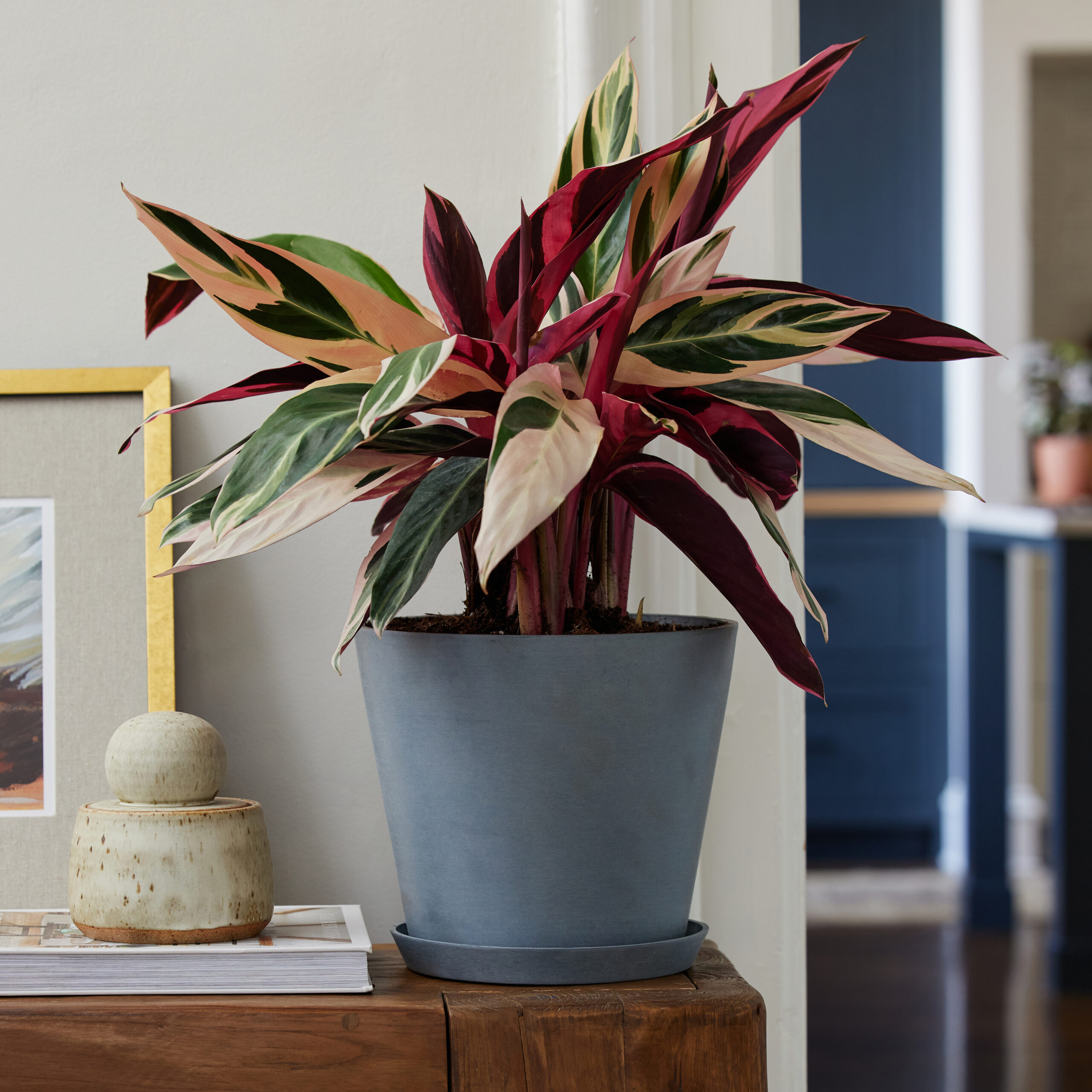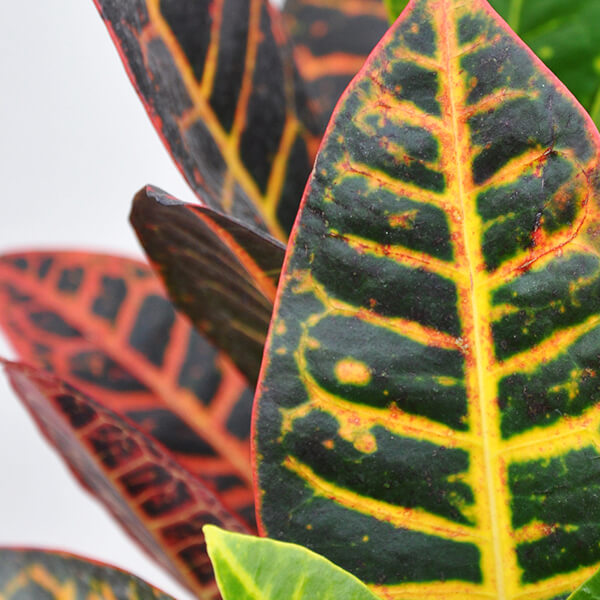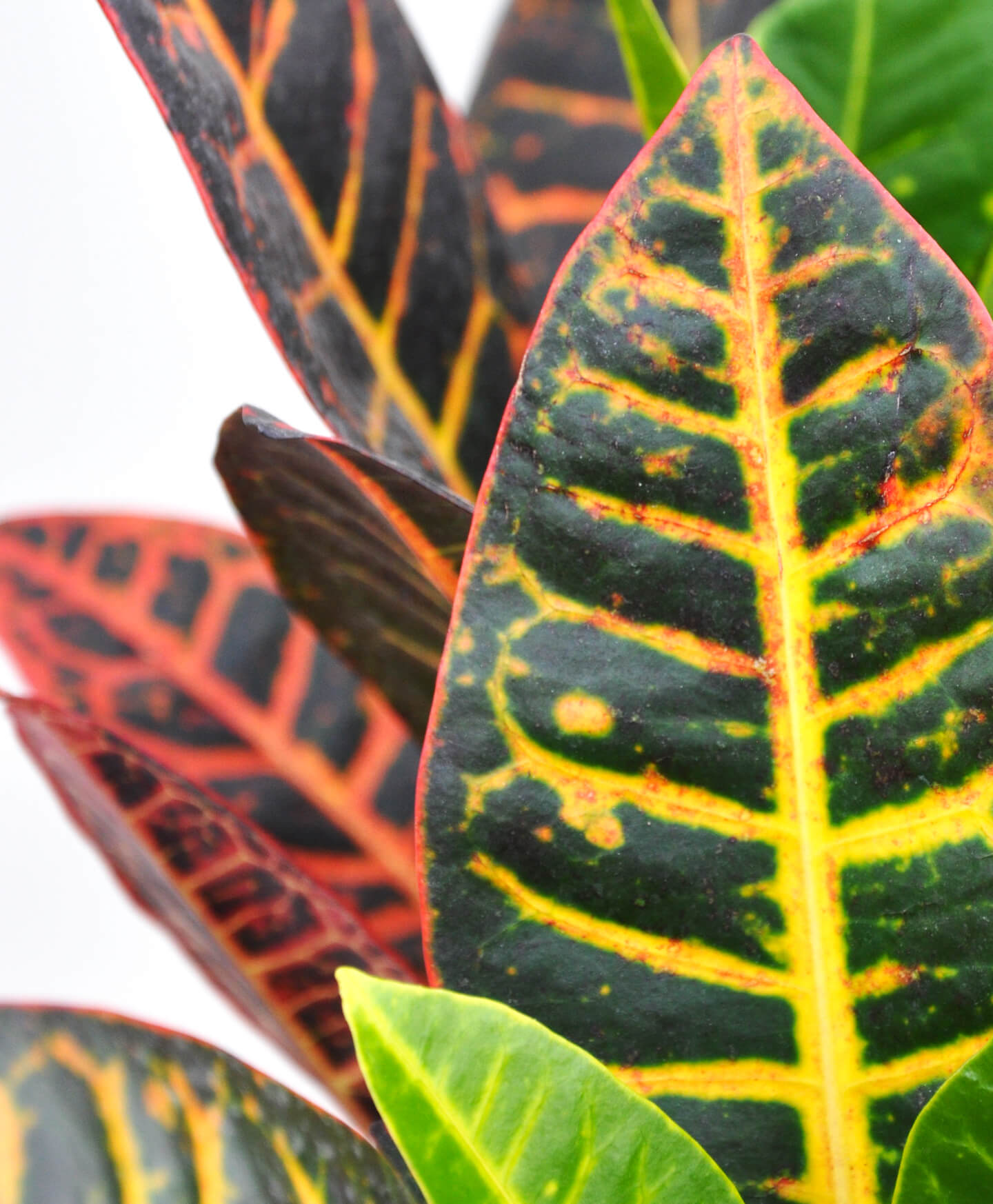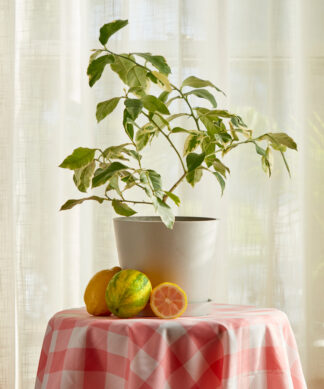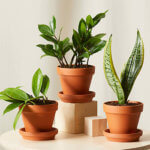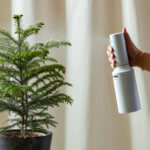How to care for your Croton
Use these instructions to care for a Croton. This guide will tell you how to water a Croton; its light, temperature, humidity preferences and any additional care it might need to help it grow.
Croton Magnificent
Your Croton Magnificent will do best in a bright spot, as it needs lots of light (if possible 4-6 hrs. Per day) to produce all those colorful leaves! If your croton does not get enough light, you might find the plant grows tall and lanky with spare leaves lacking the rich, dark hues.
Water when the top 25%-50% of the soil is dry. Water until liquid flows through the drainage hole at the bottom of the pot and discard any water that has accumulated in the saucer.
Crotons appreciate a generous amount of humidity. You can boost the humidity by misting the leaves, placing a humidifier nearby, or adding a pebble tray.
Your Croton Magnificent prefers temperatures between 60-70 degrees. Keep your Croton away from drafts and cold areas like a windowpane in the winter.
For best results, use a general houseplant fertilizer once in early spring, once in early summer, and again in mid-summer. Do not feed in the fall or winter.
Don’t panic if your plant drops a few leaves upon arrival. Generally, the Croton Magnificent does not like to be moved, so a few falling leaves within a week doesn’t mean you are doing anything wrong.
Your Croton Magnificent is moderately toxic to pets and humans. Typically, ingestion will cause mouth and stomach irritation and possible vomiting.
Croton Petra
Your Croton Petra will do best in a bright spot, as it needs lots of light (if possible 4-6 hrs. Per day) to produce all those colorful leaves! If your croton does not get enough light, you might find the plant grows tall and lanky with spare leaves lacking the rich, dark hues.
Water when the top 25%-50% of the soil is dry. Water until liquid flows through the drainage hole at the bottom of the pot and discard any water that has accumulated in the saucer.
Crotons appreciate a generous amount of humidity. You can boost the humidity by misting the leaves, placing a humidifier nearby, or adding a pebble tray.
This plant prefers temperatures between 60-70 degrees. Keep your Croton Petra away from drafts and cold areas like a windowpane in the winter.
For best results, use a general houseplant fertilizer once in early spring, once in early summer, and again in mid-summer. Do not feed in the fall or winter.
Moderately toxic to pets and humans. Typically, ingestion will cause mouth and stomach irritation and possible vomiting.
Don’t panic if your plant drops a few leaves upon arrival. Generally, the Croton Petra does not like to be moved, so a few falling leaves within a week doesn’t mean you are doing anything wrong. Make sure you follow the water and light guidelines and, with a little TLC, before you know it you will have fresh, tender leaves that will soon mature to their full, blazing glory!
Variegated Croton
Your Croton prefers indirect bright light to direct light. If your croton does not get enough light, you might find the plant grows tall and lanky with sparse leaves that lack rich, dark hues this plant is known for. If you are worried you do not have the right lighting for this plant, use a grow light!
Water your Croton when 25-50% of the soil volume is dry. Always check the soil moisture before watering. Water thoroughly until you see water flow out of the drainage hole and discard any excess water in the saucer.
Crotons appreciate a generous amount of humidity. You can boost the humidity by misting the leaves, placing a humidifier nearby, or adding a pebble tray.
Your Croton is most comfortable in temperatures between 60-80°F.
Feed once a month in the spring and summer when it is producing new leaves with a general-purpose fertilizer at half strength. Always make sure the soil is damp before applying any fertilizer.
This plant is considered moderately toxic to pets and humans. Typically, ingestion will cause mouth and stomach irritation and possible vomiting.
Don’t panic if your plant drops a few leaves upon arrival. This is a normal stress response common to crotons. Place the plant in the recommended light, water as advised, and allow the plant to adjust to its new environment over the following few weeks. Before you know it you will have fresh, tender leaves that will soon mature to their full, blazing glory!
